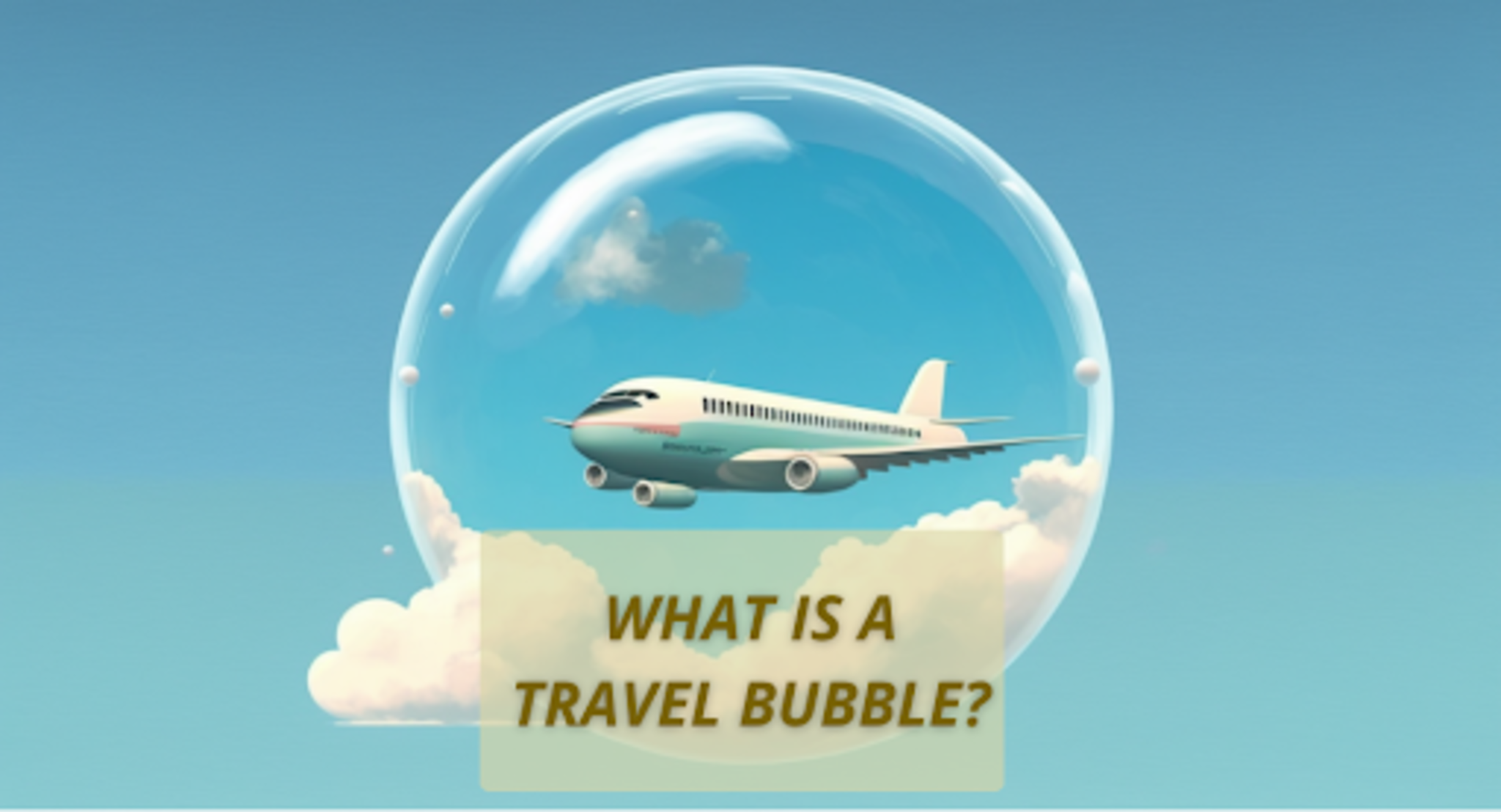What Is A Travel Bubble: The Main Pros For A Traveller
During the COVID-10 pandemic and after, you may have heard terms like “travel bubble” or “travel corridor”. But you may not know what these terms mean. As you will see below, it is a safe corridor between two countries.
Author:Alex MercerReviewer:Nathanial BlackwoodMar 04, 202333 Shares889 Views

During the COVID-10 pandemic and after, you may have heard terms like “travel bubble” or “travel corridor”. But you may not know what these terms mean. As you will see below, it is a safe corridor between two countries. This allows for quarantine-free movement. They aim to stop the spread of the virus and enable people to get back to normality. They can also open up the nation’s borders safely and responsibly.
How Did Travel Bubbles Start?
The COVID-19 pandemic caught most governments off guard. We weren’t prepared. Nor did we have the measures to deal with such a fast-spreading and dangerous virus. That was not so easy as to find a wild fortune casino review. As a result, borders closed, and foreign travel was halted at the height of the pandemic. As things got under control and the virus stalled. Governments of countries like New Zealand and Australia had to face the challenge of re-opening their borders. This gave birth to the idea of the travel bubble. As you will see below, this was meant to be a stop-gap - a safety measure to allow travel whilst still containing the virus.
What Is a Travel Bubble - A Basic Introduction
This is a secure corridor between two or more countries. The governments agree that people can move between their borders. But under certain conditions. For example, Australia and New Zealand had a travel bubble. People could move between the nations provided they had been in the first country for at least 14 days.
A bubble minimises the risk of spreading the virus but still allows for free travel movement. The corridors that arose usually had stipulations that included:
- Proof of COVID-19 vaccination before flights.
- Evidence of a negative COVID-19 test before travel.
- Located within a country for a set number of days before the trip.
These stipulations aimed to keep people safe. And stop the virus from spreading across borders between New Zealand and Australia. Also, these strict measures meant that people could travel with no quarantine.
How Are Travel Bubbles Beneficial for Countries?
The COVID-10 pandemic wrecked the global travel industry. Countries like Australia & New Zealand shut their borders. They also stopped all incoming and outgoing travel. Airlines, hotels, and associated businesses within the travel sector had to make adjustments. This included mass staff lay-offs and closures in many instances.
A travel bubble aims to boost the economic growth of New Zealand and Australia. And allow these sectors to try and re-establish themselves. It enables safe travel between states. So that people can go about their typical business. This is not only beneficial for tourism but also for the global economy. Trade, imports, and exports can all start to move again, which is only good.
Examples of Successful Travel Bubbles
To give you an idea of how a travel corridor works. We have listed some prominent examples that flourished during the pandemic.
Estonia, Latvia, and Lithuania
These three Balkan countriesshare borders and sit on the Baltic Sea due to their location and regular business and social travel. A travel bubble was established. People could travel between Estonia, Latvia, and Lithuania. Providing they had a negative COVID-19 test not older than 48 hours before entry.
Australia and New Zealand
These two countries have always enjoyed a close relationship due to their isolated location. It made sense in April 2021. When the governments of Australia & New Zealand opened a travel bubble, this meant that people could travel between the two countries. Without the need for quarantine on arrival. The only stipulation the bubble had. The person travelling must have stayed for 14 days, either in New Zealand or Australia, before their flight.
Singapore
Singapore had a simple time containing the virus. This is because the island is only accessible by land through Malaysia, across two main bridges. Singapore also introduced a variety of travel bubbles and measures. To allow people to start moving again to Asia.
One of the measures they introduced was the Air Travel Pass. This allowed people to travel to Singapore from several countries. These include Hong Kong, Macao, Mainland China, and Taiwan.
Additionally, they created special Vaccinated Travel Lanes (VTL). These allowed people from various countries, including Germany, India, Thailand, and the USA. To enter Singapore, provided they had an up-to-date COVID-10 vaccination.
United Arab Emirates
The UAE opens a variety of bubbles. These aimed at encouraging travel to and from countries often connected to tourism. A vaccine bubble was formed between the UAE, Bahrain, Greece, Seychelles, and Serbia. This allowed for safe travel for anyone within these countries. Providing they are vaccinated against the virus.
A bubble between the UAE and Maldives was formed. This again allowed people who were vaccinated to travel between the countries. Often Dubai is used as a popular stopover, such people travelling on holiday in the Maldives, so a safe corridor made sense.
A bilateral corridor was formed between the UAE and Italy. This ended any quarantine requirements between the two. It also aimed at boosting tourism travel.
How Are Travel Bubbles Beneficial for You?
As you can see, there are many benefits for countries to do this. Places like Australia and New Zealand have benefited from these travel bubbles. It allows them to stimulate their stagnant travel industries. But also encourage economic activity again. But what does this mean for the average traveller? We outline the key benefits below.
Improved Freedom of Movement
The main benefit is that your movements are not entirely restricted. At the height of the COVID-19 pandemic, things were oppressive. Travel was limited and non-existent. In many countries, people were housebound. They could only venture outdoors for essentials like shopping and exercise.
Bubbles help to get us moving once again and give us something to look forward to. We can travel between the borders of countries like New Zealand and Australia within these corridors and return to a sense of normality.
Fewer Health Risks
Even without a global pandemic, travel poses health risks. It is pretty easy to catch diseases and become unwell. You can take these issues back to your home country when you finish. Using an established travel bubble between nations helps reduce these health risks. Providing that people act responsibly, you should experience no COVID-19 health risks.
This is fantastic for people who travel often. Additionally, it’s terrific for those who are at risk—for example, people with suppressed immune systems or serious health conditions. Travel might still be dangerous for such individuals. But safe corridors between countries give them an extra layer of protection.
Quarantine Free Travel
A travel bubble can allow you to enjoy quarantine-free travel. During the pandemic, many countries imposed quarantine measures. These aimed to halt the spread of the virus. These were necessary and did help.
But, they were restricting travellers. This caused issues with finances and forward plans. For example, people travelling to the UK had to quarantine in dedicated hotels. So we were trapped inside until the quarantine period was over.
Travel corridors reduce the need for this. They allow quarantine-free movement between borders. People can continue with their holidays and business trips with no disruptions.

Alex Mercer
Author
Alex Mercer is a seasoned author and analyst specializing in wealth research, with a keen focus on evaluating the net worth of individuals across various industries. With over a decade of experience in financial analysis and wealth assessment, Alex has developed a nuanced understanding of the factors that contribute to an individual's financial status, from investments and assets to market trends and economic policies. His work involves in-depth reviews and analyses, providing insightful observations on wealth accumulation, management strategies, and the socio-economic implications of wealth distribution.
Throughout his career, Alex has become known for his ability to distill complex financial data into understandable and engaging narratives, making the subject of wealth and net worth accessible to a broad audience. His expertise is not just in numbers but in telling the stories behind them, highlighting the journeys, strategies, and decisions that lead to financial success or challenges. Alex's contributions to the field of wealth research are valuable resources for anyone looking to understand the dynamics of wealth in today's world, offering a unique perspective that bridges the gap between financial analysis and human interest.

Nathanial Blackwood
Reviewer
Nathanial (Nate) Blackwood is a distinguished financial journalist with a decade of experience in net worth analysis. He holds an Economics degree from the University of Finance and a Data Analysis certification, enabling him to blend thorough insights with engaging storytelling. Nate is known for making complex financial information accessible to a wide audience, earning acclaim for his precise and reader-friendly analyses. Beyond his writing, Nate is dedicated to financial literacy, actively participating in educational forums and workshops.
He is the founder of PureNetWealth, a platform that demystifies the financial achievements of public figures by exploring the strategies and decisions behind their fortunes. Nate's work bridges the gap between intricate economic concepts and the general public, inspiring a deeper understanding of wealth dynamics. Follow Nathanial Blackwood for essential insights into the financial narratives shaping our world.
Latest Articles
Popular Articles